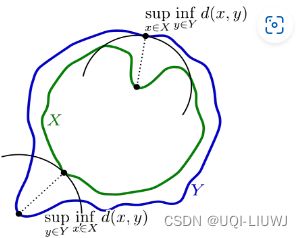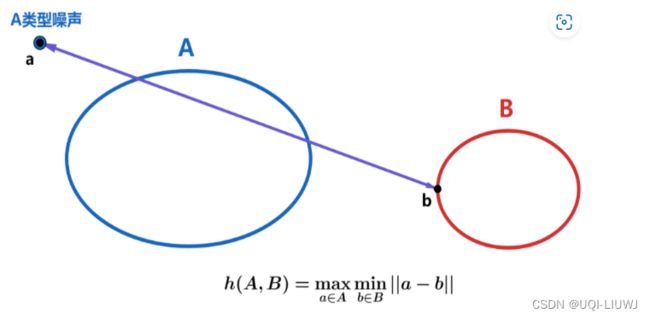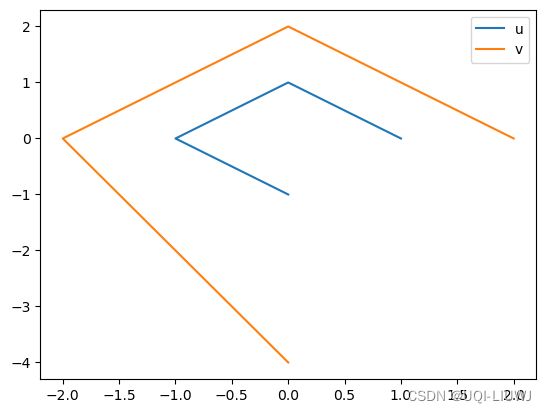数学笔记/scipy 笔记:豪斯多夫距离(Hausdorff )
1 概念
一个点集中的点到另一个点集的最短距离的最大值。
1.1 容易受噪声的影响
1.2 性质
2 举例
3 python 实现
3.1 掉包 scipy
3.1.1 数据
from scipy.spatial.distance import directed_hausdorff
u = np.array([(1.0, 0.0),
(0.0, 1.0),
(-1.0, 0.0),
(0.0, -1.0)])
v = np.array([(2.0, 0.0),
(0.0, 2.0),
(-2.0, 0.0),
(0.0, -4.0)])
import matplotlib.pyplot as plt
plt.plot(u[:,0],u[:,1],label='u')
plt.plot(v[:,0],v[:,1],label='v')
plt.legend()3.1.2 scipy
directed_hausdorff(u, v)
(2.23606797749979, 3, 0)
directed_hausdorff(v,u)
(3.0, 3, 3)返回的三个元素是什么意思呢?
以(u,v)为例,第一个元素是h(u,v)【单边】,第二个元素是u对应的index,第三个元素是v对应的index。这两个index的连线时最大的最短距离
def distance(x,y): return float(np.sqrt((x[0]-y[0])*(x[0]-y[0])+(x[1]-y[1])*(x[1]-y[1]))) ada_matrix=np.zeros((4,4)) for i in range(u.shape[0]): for j in range(v.shape[0]): ada_matrix[i][j]=distance(u[i],v[j]) ada_matrix ''' array([[1. , 2.23606798, 3. , 4.12310563], [2.23606798, 1. , 2.23606798, 5. ], [3. , 2.23606798, 1. , 4.12310563], [2.23606798, 3. , 2.23606798, 3. ]]) '''





